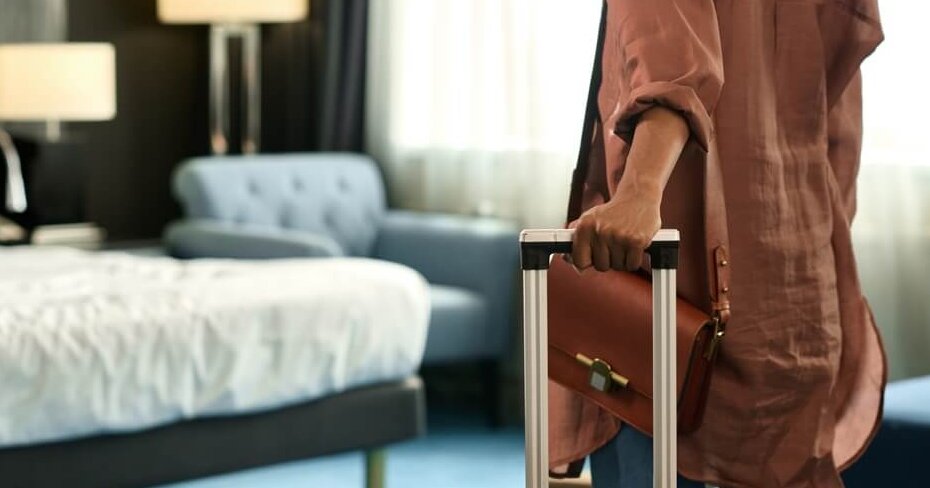How your home insurance can protect you away from home
By: Sandra MacGregor on July 8, 2025
Home insurance gives you peace of mind, knowing that your home and its contents are protected at all times. But did you know that it can also provide valuable coverage while you’re away? Your home insurance protection follows you around the globe and protects your belongings while you travel. And the best news of all -- It won’t add anything to your allowable baggage weight.
Here’s how understanding your home policy can help you travel with peace of mind.
Understanding home insurance coverage
Most people know that home insurance protects your most cherished valuable—your home. It also covers your personal belongings, so if your furniture, electronics, clothing or other possessions are damaged or stolen, your policy can replace them.
Comprehensive policies in Canada typically combine two main types of coverage:
- Personal property coverage:
Protects the house itself from damage, as well as the contents of your home, such as furniture, electronics and other valuables against covered perils like fire, theft and vandalism. Insurance limits can vary significantly, but it’s common to see policies with $30,000 to $150,000 or more in coverage, with additional coverage available for high-value items like art, antiques and jewelry.
Related: What’s the best way to insure my engagement and wedding rings? - Personal liability coverage:
Protects you from legal and financial responsibility if someone injures themselves on your property or if you accidentally cause bodily injury or damage someone else’s property, whether at home or anywhere in the world.
Protection while you're away
When you’re away on vacation, your home insurance coverage doesn’t take a break. Your policy continues to protect your home and its contents. Some types of coverage even extend to your belongings and liability while you’re travelling.
Personal property coverage
At home, personal property protection usually covers loss or damage to your possessions due to things like fire or theft while you’re away.
Your property insurance also travels with you, meaning that if a possession like your luggage or laptop is stolen from a hotel room or your rental car, you may be able to make a claim under your home insurance policy.
Be aware, however, that just like typical home insurance, you may not be covered if the loss is a result of negligence on your part (like if you did not lock your hotel room door and items were stolen from your room).
Liability protection
Liability coverage is another main feature of home insurance policies. The typical policy coverage starts at $1 million but is often recommended at $2 million or more. At home, it covers you if someone injures themselves on your property (like they slip on your sidewalk or icy porch stairs).
Your home insurance’s liability protection follows you around. If, for example, you are sued for bodily injury or property damage that you or your family members accidently cause to others, even when you travel, you may be able to draw from your general liability insurance to cover legal fees.
Related: What kind of travel insurance should you get when taking a vacation?
Keep in mind, however, that Canadian home insurance policies generally do not cover incidents that result from intentional acts, criminal behaviour, drugs or alcohol, high-risk activities or negligence.
The liability offered by home insurance also doesn’t typically protect you from scam or fraud, like cyber theft or identity fraud.
If you need more liability coverage, beyond what’s included in the standard home policy, you should consider blanket or umbrella insurance coverage. Blanket insurance covers multiple items or properties under one policy, while umbrella insurance increases the limits of your personal liability coverage above and beyond the usual limits.
For example, it could cover you for high-risk activities or for properties with a higher risk of catastrophic injuries like a house with a pool.
Maximize your coverage
Before you jet off on your next big vacation, don't forget to check in on your home insurance. Here's what you should do before boarding your flight.
Review your home insurance policy
Be sure to always fully go over the details of your insurance policy so that you’re clear on the potential benefits, limits and exclusions of your coverage. It may be tedious to read the fine print, but that’s the only foolproof way to have a good grasp of what is and isn’t covered, so you can avoid unwelcome surprises.
Update your coverage
Have you inherited any valuable assets or renovated your home lately? Keep your insurance policy updated so that it accurately matches the up-to-date value of your belongings.
Document your belongings
It’s a good idea to keep a current inventory of valuable items. Take photos or videos of the items, keep purchase receipts and write down serial numbers for expensive electronics as proof of ownership and value.
Learn more: Contents insurance 101: What it covers and why you need it
Notify your insurer
To ensure continuous home insurance coverage, make sure to inform your insurance company about extended trips (usually required if you plan to be away for 30 days or more, though the requirement will vary depending on your provider). Also note that your provider may require that someone check on your home as frequently as every 48 hours or as little as once every seven days. If you don’t fulfill your policy requirements, your insurance may be cancelled or your claims rejected.
Understanding your home insurance policy’s benefits and limits can help take the weight off worrying about your home and safety while traveling.
Take time to review your policy, update your coverage when necessary and take some basic security measures to ensure your valuables are safe. And don’t forget to shop around for home insurance and adjust your policy according to your needs every few years – you might save money in the process.
Save 20% on average on home insurance
Compare quotes from 50+ Canadian providers in 3 minutes.

.jpg?itok=DXZhvbFe)
.jpg?itok=csBN-HRa)